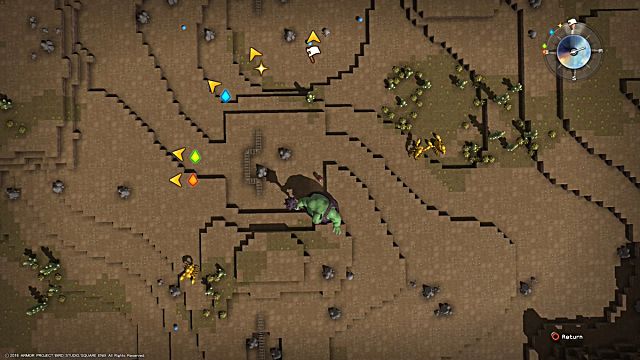
And seeing a vibrant community come together over time is a much more rewarding progression mechanism than anything involving stats or gear, especially when it comes to the wondrous great projects that serve as the capstones to each area. I felt like I still had the freedom to make these places my own, but the objectives I had to meet were fuel for my creativity, like a good writing prompt. While it can be nice to be dropped into a game like Minecraft to build whatever you can imagine with no restrictions, Dragon Quest Builders 2 encourages you to take fallow fields, a dried-up mining town, or a ruined city and build them up with specific structures and services into something that looks like a real, functional, lived-in settlement. Luckily, the construction and exploration pillars go a long way toward making up for this.

Your character’s main special attack takes so long to charge up that it does less damage per second than just button mashing, so I almost never used it. Bigger bosses with special attacks can only be avoided by sprinting forward past them and running around in clumsy circles until their animation finishes. On easier enemies, I usually just wailed on them toe-to-toe and absorbed the hits. It’s a real-time hack-and-slash system that lacks a block, dodge, or even strafe button.

The one fairly weak aspect is combat, and it’s unfortunate that such an important pillar is crumbling when so much else works so well. All along the way to each of these, you’ll come across optional quests, hidden caches of loot, and shrine puzzles that can be solved to unlock rare items. There’s an especially cool section that takes place in a huge, underground temple complex with puzzles, traps, and some tricky platforming. When you’re not putting together saloons, throne rooms, and wheat fields, you’ll find yourself journeying above and below striking vistas to defeat monsters, retrieve magic items, and recruit new allies.


 0 kommentar(er)
0 kommentar(er)
